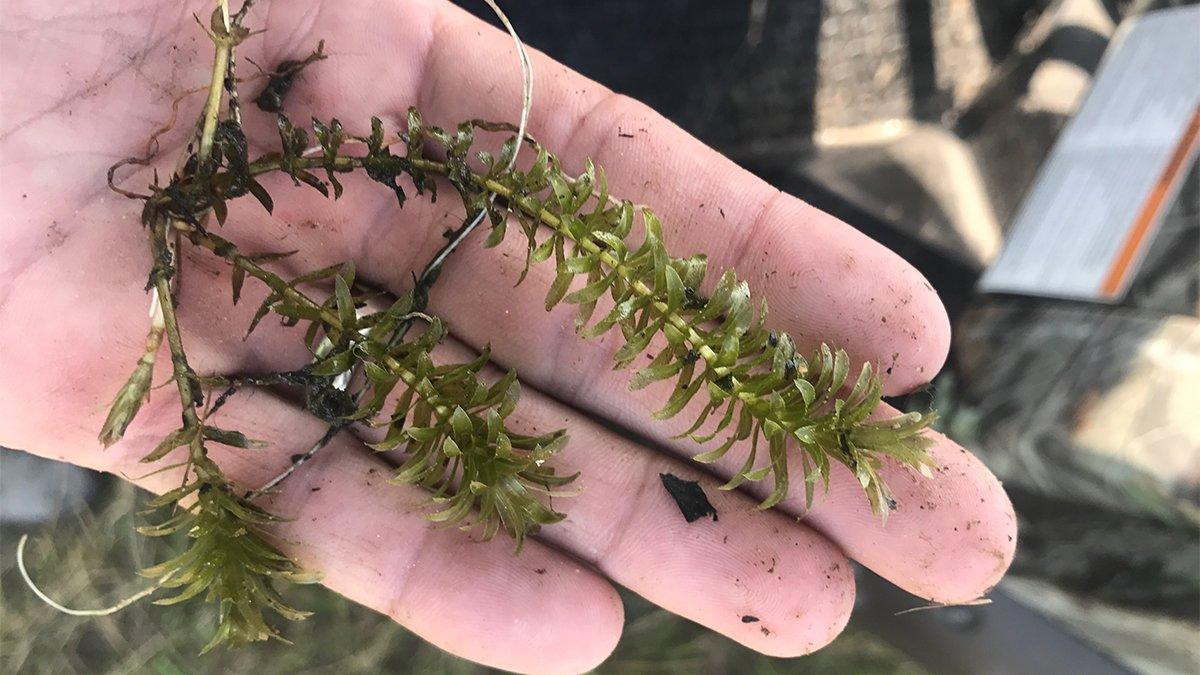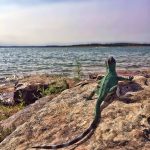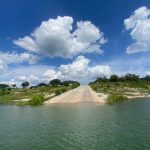Relax, armchair biologists of Canyon Lake.
Hydrilla is not spreading in the lake — it’s just more visible due to low lake levels, according to Texas Parks and Wildlife Department (TPWD).
The great hydrilla infestation, which began in 2020, poses no threat to recreationalists. Abundant, open water is readily available and public access and navigation are not impeded.
The submerged, non-native species can become problematic under certain conditions, but it also provides quality habitat for largemouth bass.
Patrick Ireland, District Supervisor of TPWD’s Inland Fisheries Division in San Marcos, said hydrilla covers less than 10% of the entire reservoir.
In August, a vegetation survey revealed similar coverage and distribution to that measured in 2021.
“At the time of the 2022 survey, Canyon Lake’s water level was approximately five feet below full pool level,” he said. “Lower water levels have exposed greater amounts of hydrilla to the surface relative to earlier in the year and the previous two growing seasons.”
Hydrilla is mostly confined to the upper end of the lake and remains under the recommended coverage for aquatic vegetation for fisheries production or about 30% of Canyon Lake’s total surface area.
TPWD is coordinating with “controlling” authorities like U.S. Army Corps of Engineers (USACE), Guadalupe Blanco River Authority (GBRA), and the Water Oriented Recreation District of Comal County (WORD) to secure additional funding for any treatments that may be necessary to control the future growth of the vegetation.
“Potential partner concerns are discussed, which helps guide our current and future management of hydrilla in Canyon Lake,” Ireland said.
Chemical treatments can help to maintain public access and navigation.
In the summer of 2021, TPWD treated hydrilla by the public fishing pier, courtesy docks and Boat Ramp #10 in the Cranes Mill area.
“Similar efforts to maintain public access may occur in the 2023 growing season, contingent upon water levels and vegetation and growth patterns,” he said.
Meanwhile, USACE Canyon Lake Manager Javier E. Pérez Ortiz said the vegetation is causing minimal impact on the Corps’ operations despite low lake levels.
“Continued monitoring will be conducted to ensure any increase in hydrilla infestation is addressed,” he said.





BS it hasn’t increased. It’s EVERYWHERE now. It is totally taking over all the coves. It needs to be addressed soon or it will just get worse and worse and become even harder to control.
The real headline here is that TPWD actually RECOMMENDS that 30% of our lake’s SURFACE AREA be covered in weeds. That’s nearly 2,500 acres of SURFACE AREA made inaccessible by an invasive weed that both the State of Texas and the federal government have classified as harmful, noxious, and a potential environmental and health hazard.
Let that sink in: To TPWD, covering 30% of the lake isn’t just acceptable, it’s desirable. Goodbye, coves. Goodbye, swimming, jet-skiing, and kayaking. Goodbye, Texas’s most beautiful view.
What’s going on over at TPWD?
I would suggest everyone read this local article and website about the dangers of hydrilla at Canyon Lake. We almost had a two adults die getting caught up in it this past year. The treats are real.
I’m saddened by the inaction of our governing bodies and pray that we do not have a boating / swimming incident that will be catastrophic – the risks are extremely high at this point.
There is ABSOLUTELY more hydrilla in Canyon Lake near Potters Creek.
it certainly does inhibit boating and use of the lake it wraps around your anchor and your legs when trying to swim..